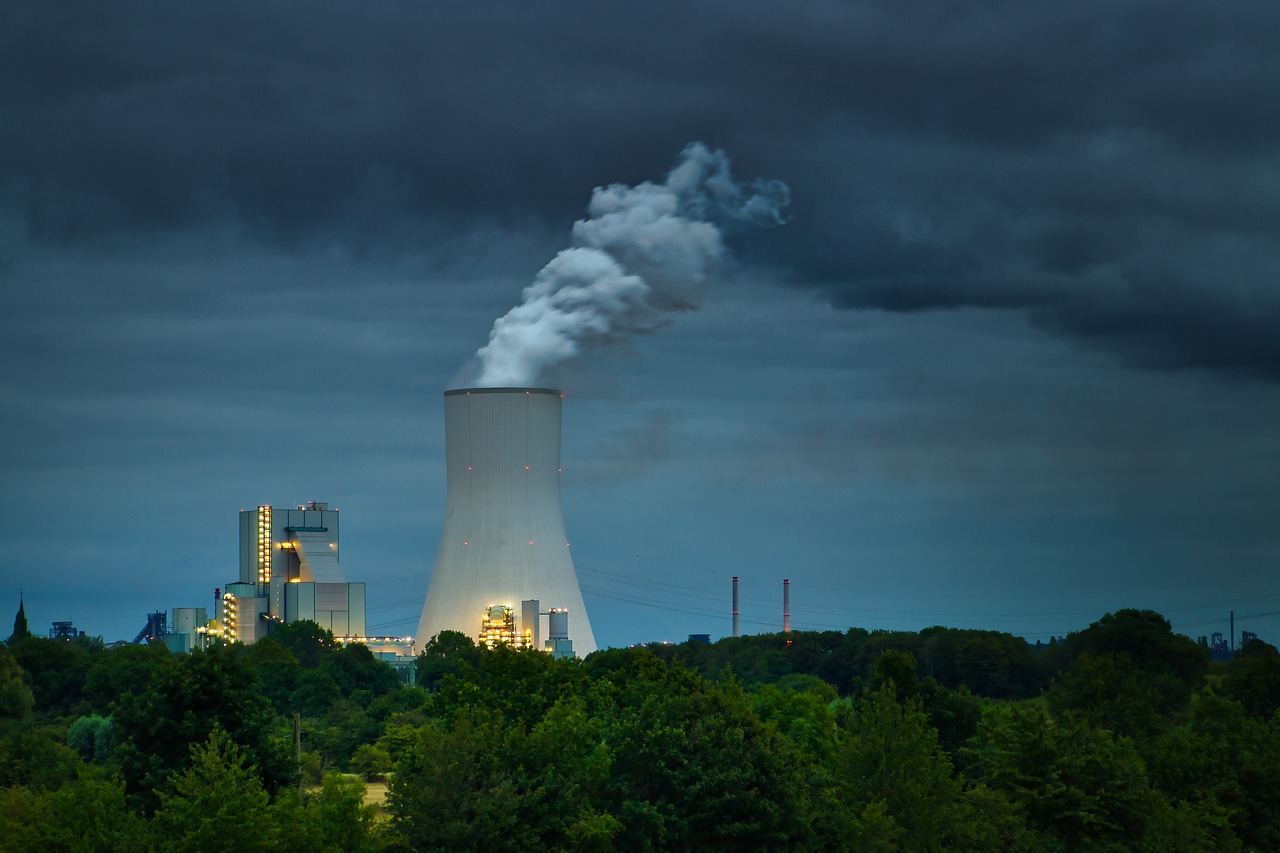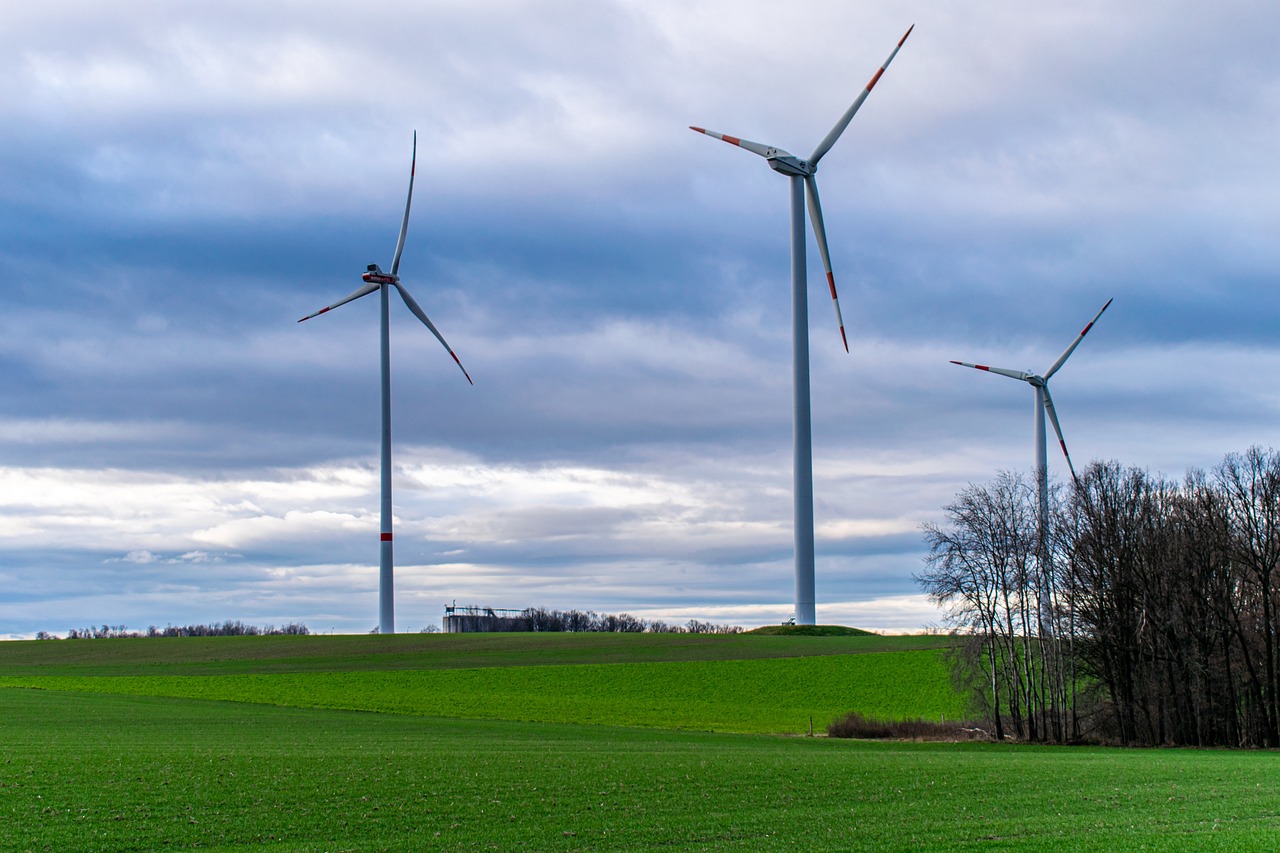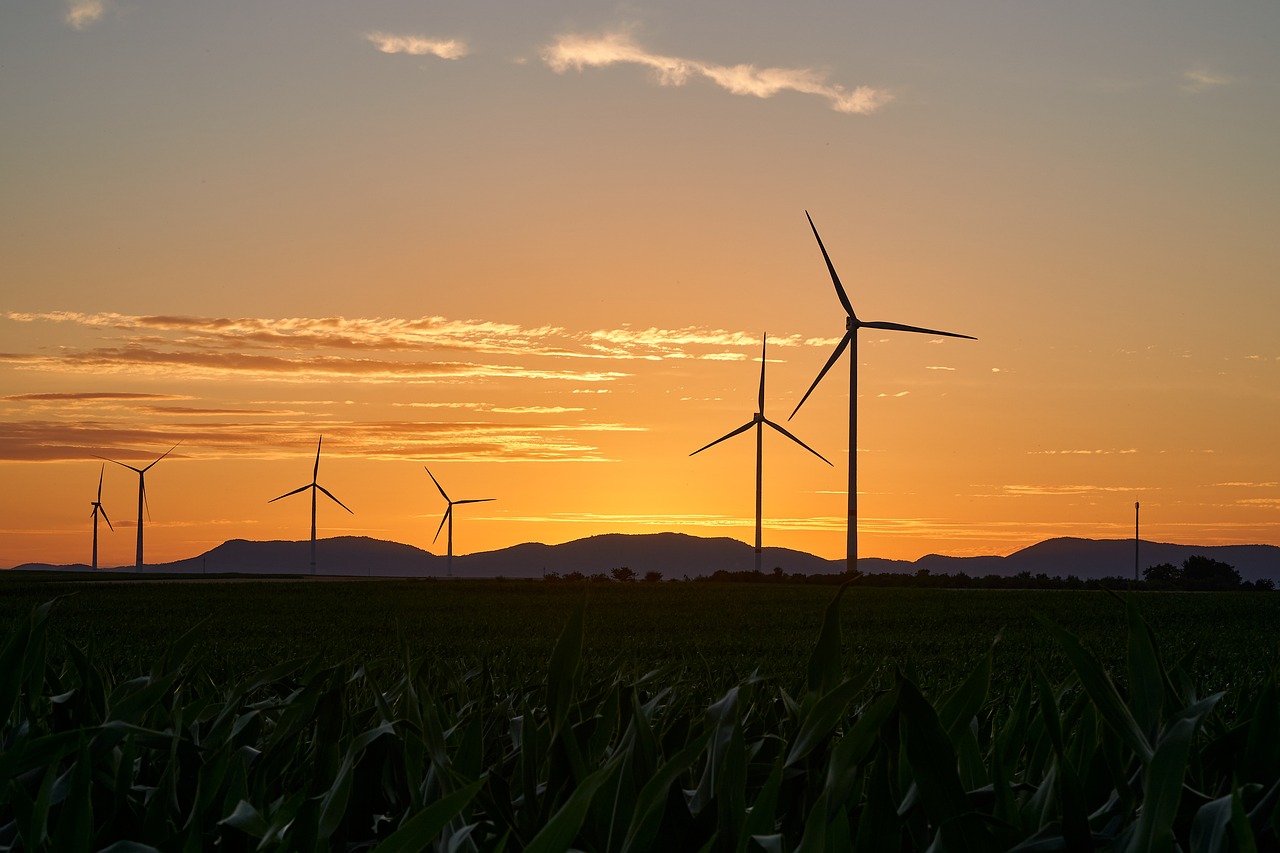The Role of Green Energy in Reducing Gender Inequality
This article explores how green energy initiatives can empower women, promote gender equality, and contribute to sustainable development while addressing the challenges faced by marginalized communities in the energy sector.
Renewable energy projects create job opportunities for women, fostering financial independence and leadership roles in their communities. This empowerment is crucial for challenging traditional gender roles and promoting equality. When women engage in renewable energy sectors, they not only gain economic stability but also become role models for young girls, showing them that they can break free from societal constraints. Imagine a community where women are leading solar panel installations and managing energy cooperatives; this shift can inspire an entire generation to dream bigger and aim higher.
Access to clean energy sources significantly impacts women's daily lives, improving health and safety. It reduces the time spent on household chores, allowing women to engage in education and economic activities. For instance, when households transition from traditional cooking methods to cleaner energy solutions, the time saved can be redirected towards pursuing education or starting small businesses. This change not only uplifts individual women but also strengthens entire communities, creating a ripple effect of empowerment.
Clean energy solutions, such as solar power, can enhance educational opportunities for girls by providing reliable electricity for schools, enabling better learning environments and extended study hours. Schools powered by renewable energy can operate more efficiently, allowing for evening classes and tutoring sessions, which are especially beneficial for girls who may have household responsibilities during the day. With access to electricity, educational resources become more readily available, making learning more engaging and effective.
Access to electricity in schools can help reduce dropout rates among girls, as it facilitates access to educational resources and safe environments conducive to learning. Schools equipped with reliable energy sources can provide essential services such as libraries, computer labs, and after-school programs. This not only keeps girls in school but also encourages them to pursue higher education, leading to better job prospects and improved quality of life.
Community-based education programs that focus on renewable energy can empower girls, providing them with knowledge and skills necessary for future careers in the energy sector. By integrating green energy education into school curricula and community workshops, girls can learn about sustainable practices, technology, and entrepreneurship. This knowledge equips them to take on leadership roles in their communities, fostering a culture of innovation and sustainability.
Transitioning to green energy can significantly improve women's health by reducing exposure to indoor air pollution and related illnesses, thus promoting overall well-being in communities. Traditional cooking methods often involve burning biomass, which releases harmful pollutants. By switching to cleaner energy sources, women can protect their health and the health of their families. Improved air quality leads to fewer respiratory issues, allowing women to thrive in their personal and professional lives.
Implementing gender-sensitive policies in energy projects ensures that women's voices are included in decision-making processes, leading to more equitable and effective outcomes in energy access and sustainability. Policymakers must recognize the unique challenges that women face in the energy sector and create frameworks that address these issues. For example, policies could include provisions for training programs specifically designed for women, ensuring they have the skills needed to participate in the green energy workforce.
Involving women in energy planning allows for the identification of unique challenges they face, ensuring that energy solutions are tailored to meet their specific needs and priorities. When women are part of the conversation, the resulting energy projects are more comprehensive and effective. This inclusive approach not only benefits women but also enhances the overall sustainability of energy initiatives, creating a win-win scenario for all stakeholders.
Establishing metrics to assess the impact of green energy initiatives on gender equality is essential for refining policies and ensuring that objectives are met effectively. By tracking progress and outcomes, stakeholders can identify successful strategies and areas needing improvement. This data-driven approach empowers communities to advocate for their needs and ensures that gender equality remains a priority in energy discussions.
Examining successful case studies of green energy projects that have positively impacted gender equality can provide valuable insights and inspire similar initiatives worldwide. For instance, programs in countries like India and Kenya have demonstrated how solar energy can transform lives by empowering women economically and socially. These stories serve as beacons of hope, illustrating the profound impact that green energy can have on gender equality.
- How does green energy empower women? Green energy initiatives create job opportunities, promote financial independence, and challenge traditional gender roles.
- What is the impact of clean energy on education for girls? Clean energy provides reliable electricity for schools, enabling better learning environments and reducing dropout rates.
- Why are gender-sensitive policies important in energy projects? They ensure that women's voices are included in decision-making processes, leading to more equitable energy access and sustainability outcomes.
- Can green energy improve women's health? Yes, transitioning to cleaner energy sources reduces exposure to indoor air pollution, promoting better health and well-being.

Empowerment through Renewable Energy
Renewable energy isn't just about harnessing the power of the sun, wind, or water; it's about transforming lives, especially for women in marginalized communities. The shift towards green energy initiatives opens up a world of opportunities, creating job prospects that can significantly alter the economic landscape for women. Imagine a community where women no longer depend solely on men for financial support, but instead, they become the leaders and decision-makers. This financial independence is crucial in challenging traditional gender roles that have long dictated societal norms.
In many parts of the world, women are often sidelined when it comes to economic opportunities. However, renewable energy projects are changing the narrative. These projects not only provide jobs but also foster an environment where women can take on leadership roles within their communities. Whether it’s managing a solar farm or leading a community initiative to promote clean energy, women are stepping up and proving that they can lead just as effectively as their male counterparts. This empowerment is not just about individual success; it's about creating a ripple effect that inspires others and challenges the status quo.
Moreover, the impact of renewable energy extends beyond just job creation. It fosters a sense of community and collaboration. Women involved in renewable energy initiatives often form networks that enable them to share resources, knowledge, and support. This collaboration is vital in building resilience within communities, as it encourages women to work together towards common goals. For instance, women can come together to educate each other about the benefits of solar energy, or to advocate for policies that support renewable energy development. Such initiatives not only empower women but also strengthen community bonds.
To illustrate the profound impact of renewable energy on women's empowerment, let's take a look at some successful case studies. In countries like Bangladesh, women have been at the forefront of solar energy initiatives. Through programs that provide training and resources, women have taken the lead in installing solar panels, which has not only improved their economic standing but also enhanced their social status within their communities. These women are not just beneficiaries; they are pioneers in the green energy revolution.
In conclusion, the empowerment of women through renewable energy is a multifaceted issue that encompasses job creation, leadership opportunities, and community collaboration. As we continue to push for a sustainable future, it is essential to recognize the pivotal role women play in this transition. By investing in renewable energy initiatives that prioritize women's involvement, we are not only promoting gender equality but also paving the way for a more sustainable and equitable world.

Access to Clean Energy
Access to clean energy sources is not just a luxury; it is a necessity that significantly impacts the daily lives of women, especially in marginalized communities. Imagine a world where women no longer have to spend countless hours gathering firewood or fetching water, all while breathing in harmful smoke from traditional cooking methods. By transitioning to renewable energy solutions, we can transform this scenario into one where women can reclaim their time and focus on education, economic activities, and personal growth.
The benefits of clean energy go beyond mere convenience. They touch upon the core of health and safety, which are critical for women and their families. For instance, when households switch to solar stoves or biogas, the risk of respiratory diseases caused by indoor air pollution is drastically reduced. This change not only safeguards the health of women and children but also creates a safer environment to live in. The time saved from household chores can be redirected towards pursuing educational opportunities or engaging in income-generating activities, thereby fostering a sense of financial independence.
Moreover, the availability of clean energy can lead to improved health outcomes. Women often bear the brunt of health issues arising from traditional energy sources, which can lead to chronic illnesses. By providing access to clean energy, we can significantly reduce these health risks. In many regions, it has been observed that when women have access to reliable energy, they can invest in better nutrition and healthcare for their families, leading to overall community well-being.
Consider the following points to understand the transformative power of clean energy access:
- Time Savings: Women can save several hours each week, which can be used for education or entrepreneurship.
- Health Improvements: Reduced exposure to smoke and pollutants leads to fewer respiratory issues.
- Economic Empowerment: With more time and better health, women can engage in income-generating activities.
In essence, access to clean energy is a game-changer. It not only enhances the quality of life for women but also contributes to the broader goal of gender equality. By addressing the energy needs of women, we are taking significant strides towards a more sustainable and equitable future. The ripple effects of these changes can be profound, influencing not just individual households but entire communities.
Q: How does clean energy specifically benefit women?
A: Clean energy reduces the time women spend on household chores and minimizes health risks associated with traditional energy sources, allowing them to engage in education and economic activities.
Q: What types of clean energy are most beneficial for women?
A: Solar energy, wind power, and biogas are some of the most beneficial clean energy sources, as they provide reliable and safe alternatives to traditional fuels.
Q: Are there any successful examples of clean energy initiatives benefiting women?
A: Yes, many initiatives worldwide have successfully integrated women into clean energy projects, providing them with jobs and skills while improving their communities' overall energy access.

Impact on Education
Access to clean energy solutions, particularly solar power, has a profound impact on educational opportunities for girls. Imagine a classroom filled with eager young minds, but the flickering light of a kerosene lamp barely illuminates their textbooks. This is the reality for many students in underprivileged areas. However, when schools are powered by reliable renewable energy, the entire learning environment transforms. Reliable electricity allows schools to operate after sunset, extending study hours and providing students with the opportunity to engage in extracurricular activities that further enrich their education.
Moreover, the presence of clean energy can enhance the overall quality of education. With solar-powered technology, schools can access modern teaching tools such as computers and projectors, which are essential for a comprehensive learning experience. This not only makes learning more interactive but also prepares students for a future that increasingly relies on technology. In this context, girls are empowered to pursue subjects like science, technology, engineering, and mathematics (STEM), fields where they have historically been underrepresented.
Statistics reveal the stark contrast in educational outcomes between schools with and without access to electricity. According to a recent study, schools equipped with renewable energy sources saw a 30% increase in student attendance and a significant decrease in dropout rates. This improvement is crucial, especially for girls, as they often face additional barriers to education. The reliable energy source allows schools to provide a safe and conducive learning environment, where girls can thrive without the fear of darkness or unsafe travel conditions.
Furthermore, community education initiatives that focus on renewable energy can play a vital role in empowering young girls. These programs not only educate them about the importance of clean energy but also equip them with valuable skills that can lead to future careers in the energy sector. For instance, workshops that teach girls about solar panel installation or maintenance can open doors to job opportunities that were previously inaccessible. By fostering a new generation of female leaders in energy, we are not just addressing gender inequality; we are also ensuring sustainable development for future generations.
In summary, the impact of clean energy on education is multifaceted. It enhances learning environments, increases attendance, reduces dropout rates, and empowers girls with the skills they need to succeed. As we continue to invest in green energy initiatives, we must prioritize educational access for all, ensuring that no girl is left behind in the quest for knowledge and empowerment.
- How does clean energy improve educational outcomes for girls? Clean energy provides reliable electricity, allowing schools to extend study hours, improve learning environments, and access modern educational tools.
- What role do community education initiatives play? These initiatives educate girls about renewable energy and equip them with skills for careers in the energy sector, promoting gender equality and economic independence.
- Are there statistics supporting the impact of clean energy on education? Yes, studies show that schools with renewable energy sources experience significantly higher attendance rates and lower dropout rates.

Reducing Dropout Rates
The issue of dropout rates among girls in educational institutions is a pressing concern, particularly in regions where access to reliable electricity is limited. When schools lack consistent power, it becomes challenging to provide a conducive learning environment. Imagine a classroom where students struggle to complete their assignments due to inadequate lighting or where teachers cannot utilize modern teaching aids effectively. This scenario not only hampers academic performance but also discourages girls from attending school regularly, leading to higher dropout rates.
However, the introduction of clean energy solutions, such as solar power, has proven to be a game changer. By providing reliable electricity to schools, girls can benefit in several ways:
- Extended Study Hours: With adequate lighting, students can stay after school to study, complete homework, or participate in tutoring programs.
- Access to Educational Resources: Electrified schools can utilize computers and the internet, offering students a wealth of information and learning tools that were previously unavailable.
- Safe Learning Environment: Reliable power means that schools can maintain a safe atmosphere, reducing the risks associated with traveling to and from school in the dark.
These improvements not only enhance the educational experience but also encourage girls to stay in school longer. When girls see tangible benefits from their education, such as improved grades and increased opportunities for future employment, they are more likely to continue their studies. This leads to a ripple effect, where educated women can uplift their families and communities, breaking the cycle of poverty and gender inequality.
Moreover, community engagement plays a critical role in this transformation. When local communities advocate for clean energy solutions, they are not just investing in infrastructure but also in the future of their children, particularly their daughters. Schools that adopt renewable energy are often seen as progressive, attracting more families who value education. This shift in perception can significantly contribute to reducing dropout rates among girls, fostering a culture that prioritizes learning and empowerment.
In summary, the correlation between access to reliable electricity and reduced dropout rates among girls cannot be overstated. By investing in green energy, we are not just lighting up classrooms; we are illuminating futures. As we continue to explore and implement these solutions, the hope is to see a significant decline in dropout rates, allowing girls everywhere to achieve their dreams and aspirations.

Community Education Initiatives
Community education initiatives focused on renewable energy play a crucial role in empowering girls and women, enabling them to break free from the constraints of traditional gender roles. These programs are not just about teaching women how to harness energy; they are about instilling confidence, fostering leadership skills, and creating a supportive environment where women can thrive. Imagine a community where young girls learn about solar panels, wind turbines, and energy efficiency—this knowledge can transform their futures and the future of their communities.
One of the key aspects of these initiatives is the hands-on training they provide. For instance, workshops can be organized where women learn to install solar panels or maintain wind turbines. This practical experience not only equips them with valuable skills but also positions them as leaders in their communities. When women take charge of renewable energy projects, they become role models for younger generations, inspiring them to pursue careers in science, technology, engineering, and mathematics (STEM).
Moreover, community education initiatives often include discussions on the benefits of renewable energy, such as its positive impact on health and the environment. By understanding these benefits, women can advocate for cleaner energy solutions in their households and communities. For example, they might learn how switching to solar energy can reduce household expenses and improve air quality, leading to better health outcomes for their families.
To ensure the success of these initiatives, it is essential to involve local leaders and organizations that understand the cultural context and can tailor programs to meet the specific needs of the community. Collaborations with schools, NGOs, and government agencies can enhance the reach and effectiveness of these programs. Additionally, creating a supportive network for women who participate in these initiatives can foster a sense of belonging and encourage ongoing engagement.
In summary, community education initiatives centered around renewable energy not only equip women with vital skills but also empower them to become advocates for change in their communities. By investing in these programs, we pave the way for a more equitable future where women play a central role in the transition to sustainable energy solutions.
- What are community education initiatives? Community education initiatives are programs designed to teach individuals within a community about various subjects, in this case, renewable energy, to empower them with knowledge and skills.
- How do these initiatives empower women? They provide women with the knowledge and skills necessary to take on leadership roles, advocate for clean energy, and improve their economic independence.
- Why is renewable energy important for gender equality? Renewable energy initiatives create job opportunities and improve access to clean energy, which can enhance women's health, education, and economic status.
- How can I get involved in supporting these initiatives? You can support these initiatives by volunteering, donating to organizations focused on renewable energy education, or advocating for policies that promote gender equality in energy access.

Health Benefits of Green Energy
Transitioning to green energy is not just a trend; it’s a crucial step towards improving public health, especially for women and children in marginalized communities. Traditional energy sources, such as coal and wood, often lead to significant indoor air pollution, which poses severe health risks. The smoke from burning these fuels can cause respiratory issues, cardiovascular diseases, and even premature death. By embracing renewable energy sources like solar, wind, and hydro, we can drastically reduce these health hazards.
One of the most compelling benefits of green energy is its ability to improve indoor air quality. For instance, households that switch from traditional fuels to solar-powered appliances experience a notable decrease in respiratory ailments. This is particularly important for women, who often spend more time indoors managing household tasks. According to the World Health Organization, indoor air pollution from solid fuels causes an estimated 3.8 million premature deaths annually, with women and children being the most affected. By adopting cleaner energy solutions, we not only enhance their health but also empower them to take charge of their well-being.
Moreover, the health benefits extend beyond just cleaner air. The integration of green energy solutions can lead to better nutrition and food security. For example, communities that utilize solar energy for cooking and refrigeration can store food longer and prepare healthier meals. This change directly impacts family health, as it allows for a more balanced diet and reduces the risk of foodborne illnesses. The reduction in time spent collecting firewood also means that women and children can allocate more time to education and economic activities, further enhancing their overall quality of life.
To illustrate the profound impact of green energy on health, consider the following table that summarizes key health benefits:
| Health Benefit | Description |
|---|---|
| Improved Air Quality | Reduces respiratory diseases caused by indoor air pollution. |
| Enhanced Nutrition | Facilitates better food storage and preparation. |
| Increased Safety | Decreases the risk of accidents associated with traditional cooking methods. |
| Time Savings | Less time spent on fuel collection means more time for education and work. |
In conclusion, the shift to green energy is not merely an environmental necessity; it is a public health imperative. By prioritizing renewable energy sources, we can create healthier living conditions, particularly for women and children who bear the brunt of energy poverty. The ripple effects of these health benefits can lead to stronger communities, where individuals are empowered to pursue their dreams without the burden of illness or disadvantage. Isn’t it time we embraced a cleaner, healthier future?
- What are the main health benefits of using green energy? Green energy reduces indoor air pollution, improves nutrition through better food storage, and saves time spent on fuel collection.
- How does green energy impact women's health specifically? Women are often the primary caregivers and spend more time indoors; thus, cleaner energy sources significantly reduce their exposure to harmful pollutants.
- Can green energy solutions improve community health overall? Yes, by reducing pollution and promoting better living conditions, green energy contributes to the overall health and well-being of communities.

Gender-Sensitive Policy Frameworks
Implementing gender-sensitive policies in energy projects is not just a good practice; it’s an essential step towards achieving sustainable development and fostering equality. When women are involved in the planning and decision-making processes of energy initiatives, the outcomes are often more equitable and effective. This is because women bring unique perspectives and experiences that can highlight specific challenges faced by their communities. For instance, women often bear the brunt of energy poverty, and their insights can lead to solutions that are not only innovative but also practical.
To create a truly inclusive energy sector, it is crucial to establish frameworks that prioritize women's voices. This means actively involving women in discussions about energy access, policy formulation, and implementation. By doing so, we can ensure that energy solutions are tailored to meet the specific needs and priorities of women. For example, if a community is planning to install solar panels, women can provide valuable input on how these systems can be designed to accommodate household needs, such as lighting for evening study sessions for children.
Moreover, monitoring and evaluation are key components of gender-sensitive frameworks. Establishing metrics to assess the impact of green energy initiatives on gender equality is essential. This not only helps in refining policies but also ensures that objectives are met effectively. By tracking progress, stakeholders can identify areas for improvement and celebrate successes, creating a feedback loop that fosters continuous enhancement of gender-sensitive policies.
| Key Elements of Gender-Sensitive Policy Frameworks | Description |
|---|---|
| Inclusive Decision-Making | Involving women in energy planning to ensure their needs are met. |
| Tailored Solutions | Creating energy solutions based on the unique challenges faced by women. |
| Monitoring and Evaluation | Establishing metrics to assess the impact on gender equality. |
| Capacity Building | Providing training and resources to empower women in the energy sector. |
Incorporating a gender-sensitive approach not only benefits women but also enhances the overall effectiveness of energy projects. When women are empowered, communities thrive. This is because women often reinvest their earnings into their families and communities, leading to improved health, education, and economic outcomes. Therefore, it is imperative for policymakers to recognize the value of women’s contributions in the energy sector and to actively work towards creating an environment where their voices are heard and valued.
In conclusion, the development of gender-sensitive policy frameworks is a fundamental step in ensuring that the transition to green energy is inclusive and equitable. By prioritizing women's involvement in energy initiatives, we can pave the way for a more sustainable future that benefits everyone, especially marginalized communities who have been historically overlooked.
- What are gender-sensitive policies? Gender-sensitive policies are frameworks that consider the different needs and challenges faced by women and men in various sectors, including energy.
- Why is women's involvement important in energy projects? Women's involvement ensures that energy solutions are tailored to meet their specific needs, leading to more effective and equitable outcomes.
- How can we measure the impact of green energy initiatives on gender equality? By establishing metrics and monitoring systems that track progress and evaluate the effectiveness of gender-sensitive policies.
- What are some examples of successful gender-sensitive energy initiatives? Successful initiatives often include community solar projects where women are involved in decision-making and implementation, leading to improved access and outcomes.

Incorporating Women's Perspectives
Incorporating women's perspectives in energy planning is not just a matter of fairness; it's a transformative approach that leads to more effective and sustainable energy solutions. When women are included in decision-making processes, their unique experiences and challenges come to the forefront, allowing for tailored solutions that resonate with their needs. For instance, women often bear the brunt of energy inefficiencies in their households, managing everything from cooking to child care under challenging conditions. By listening to their voices, energy projects can address specific issues such as the need for clean cooking solutions or reliable electricity for nighttime safety.
Moreover, when women participate in energy planning, it fosters a sense of ownership and responsibility within the community. Women who are involved in these initiatives are more likely to advocate for sustainable practices, ensuring that energy solutions are not only effective but also environmentally friendly. This engagement can lead to innovative ideas that might not be considered in a male-dominated planning environment. For example, women may suggest community solar projects that allow for shared access to renewable energy, thereby enhancing both affordability and sustainability.
It's also essential to provide training and resources for women to engage actively in these processes. Workshops and educational programs can empower them with the knowledge needed to contribute meaningfully. By equipping women with skills in areas such as project management, technology, and finance, we can bridge the gender gap in the energy sector and create leaders who can inspire future generations. As we move towards a more sustainable future, it’s crucial to recognize that the inclusion of women is not merely an add-on; it's a vital component of successful energy projects.
To illustrate the importance of incorporating women's perspectives, consider the following table that outlines some key benefits:
| Benefit | Description |
|---|---|
| Tailored Solutions | Energy projects that address the specific needs of women, leading to more effective outcomes. |
| Community Engagement | Increased ownership and responsibility among women, fostering advocacy for sustainable practices. |
| Innovation | Unique ideas and solutions that arise from women's experiences and challenges in energy use. |
| Skill Development | Empowering women through training in project management and technology, leading to leadership roles. |
In conclusion, incorporating women's perspectives in energy planning is a powerful strategy that not only enhances the effectiveness of energy projects but also promotes gender equality. As we continue to develop and implement green energy solutions, we must ensure that women's voices are not just heard but are integral to the conversation. Their insights can lead to innovations that benefit entire communities, paving the way for a more sustainable and equitable future.
- Why is it important to include women in energy planning?
Including women ensures that energy solutions address their specific needs, leading to more effective and sustainable outcomes. - How can women's perspectives improve energy projects?
Women bring unique experiences and insights that can lead to innovative solutions and better community engagement. - What types of training should be provided to women in energy sectors?
Training should focus on project management, technology, finance, and advocacy to empower women to take leadership roles. - Can you give an example of successful incorporation of women's perspectives?
Community solar projects that allow shared access to renewable energy are a great example of how women's input can lead to innovative solutions.

Monitoring and Evaluation
Monitoring and evaluation (M&E) play a pivotal role in the success of green energy initiatives, especially when it comes to promoting gender equality. By establishing robust metrics, stakeholders can assess the impact of these projects on women and marginalized communities. But why is this so crucial? Well, without proper evaluation, it’s like sailing a ship without a compass; you might be moving, but you have no idea if you’re heading in the right direction.
To effectively monitor and evaluate the outcomes of green energy projects, it’s essential to develop a comprehensive framework that includes both qualitative and quantitative indicators. These indicators should be designed to capture the multifaceted impacts of energy access on women’s lives, including economic empowerment, health improvements, and educational opportunities. For example:
| Indicator | Description | Measurement Method |
|---|---|---|
| Economic Empowerment | Increase in women's income due to job creation in renewable energy sectors. | Surveys and income reports |
| Health Improvements | Reduction in respiratory illnesses linked to traditional cooking methods. | Health assessments and surveys |
| Educational Opportunities | Increased school attendance rates among girls. | School enrollment data and attendance records |
Moreover, involving women in the M&E process is vital. Their insights can provide a clearer picture of the challenges they face and the benefits they experience from green energy initiatives. This participatory approach ensures that the evaluation process is not only inclusive but also effective in capturing the real impacts of energy access. By listening to women’s voices, we can tailor energy solutions that genuinely meet their needs.
In addition, establishing a feedback loop is crucial. This means creating mechanisms for women and other stakeholders to share their experiences and suggestions about the energy projects. Such feedback can inform future initiatives, making them more responsive and equitable. For instance: if women report that a specific renewable energy technology is not meeting their needs, adjustments can be made to ensure better alignment with their daily lives.
Ultimately, a solid M&E framework is not just about collecting data; it’s about transforming that data into actionable insights that can drive policy changes and improve project outcomes. By continuously refining our approaches based on what we learn, we can create a more sustainable and equitable future for all, particularly for women in marginalized communities.
- What is the importance of monitoring and evaluation in green energy projects? Monitoring and evaluation help assess the impact of these projects on gender equality and ensure that initiatives are effective and inclusive.
- How can women be involved in the monitoring and evaluation process? Women can be included by providing feedback, participating in surveys, and being part of decision-making teams that assess project outcomes.
- What types of indicators should be used in monitoring gender impacts? Indicators can include economic empowerment, health improvements, and educational opportunities, measured through surveys, health assessments, and school data.

Case Studies of Successful Initiatives
The journey towards gender equality through green energy is not just theoretical; it is paved with real-life examples that showcase the transformative power of renewable energy initiatives. One such initiative is the Solar Sister program, which empowers women in Africa by training them to become solar entrepreneurs. This program not only provides women with the tools to sell solar products but also fosters community engagement and enhances energy access. By creating a network of women-led businesses, Solar Sister has significantly improved the livelihoods of many women while addressing energy poverty.
Another inspiring example comes from Barefoot College in India, which has been instrumental in training women, particularly grandmothers, to become solar engineers. This initiative is revolutionary as it challenges traditional gender norms and equips women with technical skills that were previously considered male-dominated. The success of this program has led to the establishment of solar power systems in rural areas, improving energy access while simultaneously uplifting women's status in their communities.
In addition to these programs, the Energy for Women initiative in Kenya focuses on providing clean energy solutions specifically designed for women-led households. By offering affordable solar energy options, this initiative not only improves the quality of life for women but also encourages them to engage in economic activities that were previously hindered by energy scarcity. The ripple effect of such programs is profound, as they contribute to enhanced health, education, and economic opportunities for women and their families.
To further illustrate the impact of these initiatives, consider the following table that summarizes key outcomes from these successful case studies:
| Initiative | Location | Key Outcomes |
|---|---|---|
| Solar Sister | Africa | Empowered women entrepreneurs, increased energy access, improved community health |
| Barefoot College | India | Trained women as solar engineers, fostered community leadership, enhanced educational opportunities |
| Energy for Women | Kenya | Improved household energy access, promoted economic activities, enhanced quality of life |
These case studies exemplify how green energy initiatives can be a catalyst for change, not only in terms of energy access but also in promoting gender equality. By investing in women and ensuring their active participation in the energy sector, we can create sustainable solutions that benefit entire communities. As more organizations recognize the importance of gender-inclusive energy policies, the potential for widespread positive change becomes increasingly evident.
Q: How do green energy initiatives empower women?
A: Green energy initiatives empower women by providing them with job opportunities, financial independence, and leadership roles. These initiatives also help challenge traditional gender roles and promote equality within communities.
Q: What are the health benefits of transitioning to green energy?
A: Transitioning to green energy reduces exposure to indoor air pollution, leading to improved health outcomes for women and their families. This transition promotes overall well-being and enhances the quality of life in communities.
Q: How can we ensure women's voices are included in energy decision-making?
A: Implementing gender-sensitive policies and frameworks in energy projects ensures that women are actively involved in decision-making processes. This inclusion helps address their unique challenges and needs in energy access and sustainability.
Frequently Asked Questions
- How does green energy empower women?
Green energy initiatives create job opportunities specifically for women, allowing them to gain financial independence and take on leadership roles within their communities. This empowerment is vital for challenging traditional gender roles and fostering equality.
- What impact does access to clean energy have on women's daily lives?
Access to clean energy dramatically improves women's daily lives by enhancing health and safety. It reduces the time spent on household chores, which enables women to pursue education and engage in economic activities, thus promoting their overall well-being.
- How can renewable energy improve educational opportunities for girls?
Renewable energy solutions, like solar power, can provide reliable electricity to schools, creating better learning environments and extending study hours for girls. This access helps to reduce dropout rates and encourages more girls to complete their education.
- What are the health benefits of transitioning to green energy?
Transitioning to green energy helps reduce exposure to indoor air pollution, which is often a significant health risk for women and children. By promoting cleaner energy sources, communities can improve overall health and well-being.
- Why are gender-sensitive policy frameworks important in energy projects?
Implementing gender-sensitive policies ensures that women's voices are included in decision-making processes related to energy access and sustainability. This leads to more equitable outcomes and better-tailored energy solutions that meet the unique needs of women.
- How can community education initiatives empower girls in the energy sector?
Community-based education programs focusing on renewable energy can equip girls with the knowledge and skills necessary for future careers in the energy sector. This empowerment is crucial for breaking down barriers and promoting gender equality in the workforce.
- What are some successful case studies of green energy impacting gender equality?
Examining successful case studies of green energy projects reveals valuable insights into how these initiatives can positively impact gender equality. These examples can inspire similar projects worldwide, showcasing the potential of green energy to transform lives.



















